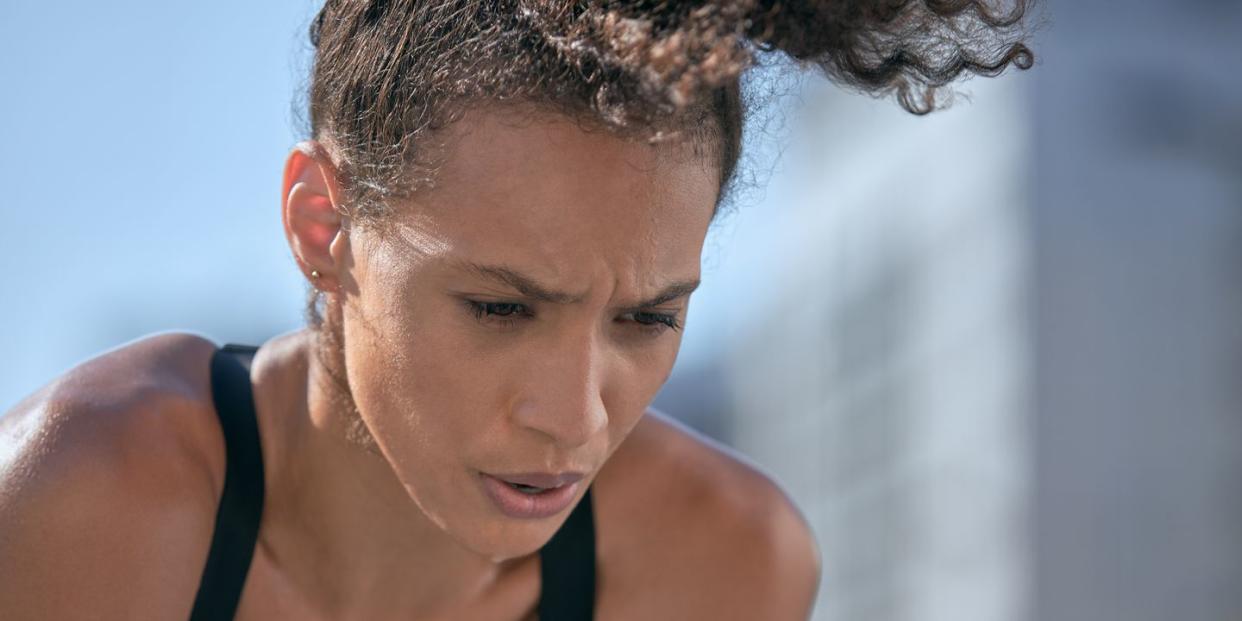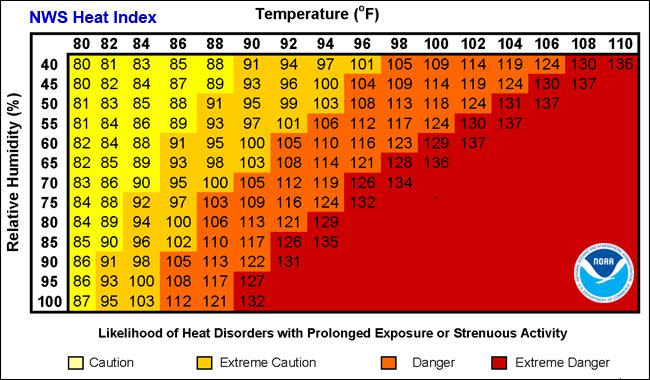Experts Reveal How Hot Is Too Hot to Exercise Outside

Thanks largely to climate change, crazy-high temperatures in a lot of the country are the new normal. Average world temps were at their highest on record for two weeks this July, and Phoenix, for example, just hit 110°-plus every single day for a couple of weeks in a row.
We should expect more of the same: Experts predict that the average global temperatures could soar another 2 to 10 degrees in the coming decades. The most recent figures show that heat-related illnesses kill 600-1,300 Americans a year, either through heat stroke or other conditions that are made worse by the spiking temperatures, according to the EPA.
What that means to folks who stay fit by walking, running, biking, playing pickleball or doing anything else under the sun: a greater chance of being hit by heat exhaustion or one of the more serious health calamities brought on by high temperatures, says Elizabeth Gardner, M.D., sports medicine expert and an associate clinical professor at Yale School of Medicine.
“It certainly is a paradigm shift, but this is where we’re at,” says Dr. Gardner, of the fact that we all have to do more to guard against heat exhaustion, heat stroke and other issues, even if we’re used to working out in warm climates. “The fact that it’s been 120° in Phoenix for days doesn’t make it any safer.”
How hot is too hot to work out?
Google that question and you’ll get a big “90°” up at the top of the search results, but that’s just an estimate and only part of the story.
“The problem with that number is that it doesn't take into account the other factors that affect your body’s perception and experience with heat,” says Dr. Gardner. “We all know that 90° temperatures and 90% humidity in Connecticut or the Bahamas is not the same as 90° in Arizona with dry heat. It feels different, and the body is being stressed in different ways.”

If the only info you have is the temperature, 80° to 90° F is the be-extra-careful zone, says Stefani Sassos, M.S., R.D.N., C.S.O., C.D.N., NASM-CPT, the Good Housekeeping Institute’s Nutrition Lab Director, who is also a personal trainer. “There are a lot of variables, so it’s hard to pin it down to just a number.”
Other factors to consider
[accordion id='2665f17f-7388-477a-a557-3ade70dc32e9'][/accordion]
Here's what to know about staying safe in the heat:
Trust your body. “If you go outside and it just feels borderline uncomfortable, you should say ‘I’m just going to do a light workout’ or go indoors,” says Sassos.
Think about your body’s ability to handle stress that day, says Dr. Gardner. Things like if you're tired, under the weather, didn't sleep well or are a little hungover all affect how well your body will handle the heat that particular day. “In the end you want to leave a little in the tank to live to fight another day — there’s always tomorrow,” she says. “That’s not to say you should trade your sprint workout in 100° weather for sitting on the couch, but there are lots of other ways to get the benefits of working out.” Think: Indoor cardio, Crossfit or yoga (not the hot kind), or go for a swim.
Work out early in the morning or in the evening, when it’s cooler, says Sassos. “Avoid the middle of the day.”
Wear wicking clothes. Lightweight performance clothes designed for sports in hot weather are key, along with a hat, shades and sun protection. “Don’t go in your old college t-shirt, which has zero wicking capacity,” says Sassos. But be aware: “Not all fabrics that claim to be moisture wicking actually are,” says Lexie Sachs, the Good Housekeeping Institute’s Textiles, Paper & Apparel Lab executive director. “My trick is to take a drop of water and place it on the inside of the fabric — the part that touches your skin. You should see that drop spread out wide quickly. If it beads up or doesn’t spread then it won’t manage your sweat well.”
Hydrate before, during and after your workout. “Obviously after is crucial, but try to bring a bottle with you,” says Sassos. If it’s super hot or you’re exercising for more than an hour, sip an electrolyte drink.
Don’t push it. “In high heat, try taking it a little easier, really gauging how your body feels and being okay with turning back a little sooner,” says Dr. Gardner.
Know the signs of heat illness. If you don’t feel right, stop and get someplace where you can rest, hydrate and cool down, says Sassos.
The warning signs of heat exhaustion include the following, according to the CDC:
Heavy sweating
Paleness
Muscle cramps
Tiredness
Weakness
Dizziness
Headache
Nausea or vomiting
Fainting
Untreated heat exhaustion can progress to heat stroke, which can lead to permanent disability or death if not treated quickly. If you see someone with these signs, call 911 and move the person to a shady area and try to bring their temperature down as quickly as possible.
These are some of the warning signs of heat stroke:
A body temperature above 103°F
Red, hot, and dry skin that isn’t sweating
A Rapid, strong pulse
Throbbing headache
Dizziness
Nausea
Confusion
Unconsciousness
Bottom line: Heat illness is no joke, so pay attention to your body and be open to working out indoors if need be.
You Might Also Like

